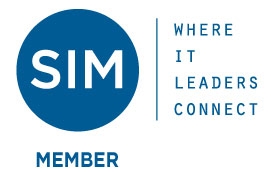One way to break the unemployment bottleneck – focus on potential over skills –
[Shared from Lou Adler on hiring issues]
For 35 years I’ve been successfully convincing hiring managers that raw experience and skills are far less important than past performance and future potential. It hasn’t been easy. They quickly agree when they’re hiring or promoting someone whom they’ve worked with in the past, or someone referred by a trusted advisor. However, when the person is unknown, the skills, experience, academic and industry filter automatically kicks in. This is shame for a variety of reasons, to name just a few:
Some (but not all) Problem with Filtering on Experience
•eliminates the hiring of diversity candidates (race, age, gender) as an option since by definition diversity means the person didn’t follow the classic career progression
•prohibits returning military veterans from consideration for anything other than entry-level or low-level supervisory positions
•prevents strong people from other industries from getting a fair assessment
•precludes high potential people who have progressed more rapidly than their peers from being considered
•excludes all fully-qualified and fully-employed people from consideration who are not willing to take a lateral transfer
Here’s a list of 61 reasons why it’s so hard for hiring managers to see the obvious. Despite these challenges, on these pages and in The Essential Guide for Hiring & Getting Hired, I make the claim that bridging the “experience and skills” vs. “potential and performance” gap is actually quite easy, more legally sound, and essential for improving the quality of people hired.
For the legal part I’ll refer you to this white paper and webcast by David Goldstein of Littler Mendelson (the premier U.S. labor law firm), and offer this tidbit of his: Employers are not legally required to post their internal job descriptions when advertising an open position, nor is there any legal obligation to (or advantage in) posting boring ads. David goes on to suggest that performance-based job descriptions can be substituted for skills and experiences. Not only are these equally objective, they’re more predictive and they possess the advantage of opening up the door to more high-potential and diverse candidates.
With the legal excuse put aside, and a means to translate past performance from different industries, all that’s left is a method for assessing future potential. Here’s my two-step solution: first look for the Achiever Pattern during the work-history review and then ask the problem-solving question in the two-question interview. The Achiever Pattern indicates that the person is consistently performing in the top 25% of his/her peer group. This is pretty easy to spot if you know how to read between the lines. Here’s how:
•Find out if the person was rehired, or rehired others. Many achievers have been recruited by their former bosses or referred by their previous co-workers. Find out how they got their last few jobs to see if the person was rehired, referred, or applied to a job posting.
•Determine if each job change was part of a bigger career plan or a reaction to a problem. Achievers tend to carefully select jobs based on some major overriding career goal. Even if the person lost their job, find out how they found their next one. Achievers do much more than just applying to a posting.
•For each company ask about major projects and accomplishments. Achievers get assigned to handle the most important projects, the toughest customers and the most difficult technical problems, regardless of their years of experience. Look for this pattern, determine if it occurred at different companies and with different managers, and see if the work is expanding in scope and challenge.
•Get comparisons of performance to the person’s peers. Compare the person’s specific performance to others in the group by asking about rankings, standings, differences between the top and average, and what the person did differently to get to the top of pack.
•Ask about any type of recognition received and how and why. Achievers receive lots of recognition. This can take a variety of forms like bigger raises, special bonuses, awards won, promotions, patents, presentations at industry conferences, published whitepapers, commendations, coaching roles and fellowships.
•Assigned to important teams and early exposure to executives. Rather than use affability to assess team skills, track the growth of the teams the person has been assigned to over the past few years. If this has increased significantly to include expanded functional responsibility, broader cross-functional involvement, and more exposure to senior management inside and outside the company, you can be assured the person is an achiever with strong team skills.
•They learn new skills quickly. Achievers do more with less. During the interview ask the person to describe their biggest accomplishments with the least amount of skills and experience. Then find out how they learned what was needed to be learned, and how they applied this knowledge. You’ll quickly discover why you want to hire more achievers, even if they don’t have a lot of experience.
Achievers leave lots of evidence in their wakes, and if the wake is big enough, you can rest assured there’s an achiever out in front. Stop box checking skills and experience as the first step in your interview process, look for the Achiever Pattern instead. As Jim Collins said in Good to Great, you need to put great people on the bus if you want to build a great company, or a great team. Of course, you then need to let them drive.
______________________________________________________
Lou Adler (@LouA) is the Amazon best-selling author of Hire With Your Head (Wiley, 2007) and The Essen tial Guide for Hiring & Getting Hired. You might want to join Lou’s new LinkedIn group to discuss this and related hiring issues.
Photo credit: baranq/Shutterstock.com














Comments are closed.